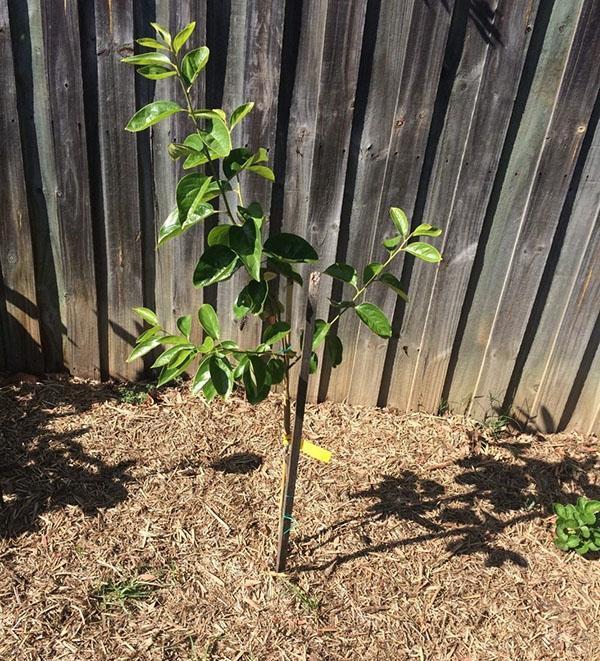Persimmon seedlings: not an easy choice, but a successful planting
 Finding suitable persimmon seedlings, even in the southern regions of the country, is very problematic. Therefore, you need to know the basic rules for choosing these specimens, as well as some of the subtleties of the planting process. It is held in autumn, when the weather is not hot and it rains from time to time.
Finding suitable persimmon seedlings, even in the southern regions of the country, is very problematic. Therefore, you need to know the basic rules for choosing these specimens, as well as some of the subtleties of the planting process. It is held in autumn, when the weather is not hot and it rains from time to time.
How to choose persimmon seedlings?
Traditionally, exotic specimens are sold grafted. The stock is either Caucasian or Virginian form. Scions take root on them very well and quickly. However, the Caucasian has a fibrous root system. For this reason, suitable conditions have been created for her in the natural area:
- sufficient rainfall;
- warm climate;
- high soil fertility.
Dry summers and severe frosts down to -20 ° C are a disaster for the culture. As a result, it sits in the ground for a long time and does not grow. If a miracle happens, then the tree lives for a short time.
Therefore, for such regions, it is better to look for virgin specimens. These persimmon seedlings are distinguished by a long taproot extending to a considerable depth. However, they withstand harsh winters.
The timeless art of landing
Choose the most sunny place for the garden exhibit, but without drafts. First, the soil substrate is separately prepared: garden soil mixed in half with compost... Then a hole is dug much wider than the dimensions of an earthen coma. Further actions are reduced to the fact that:
- at the bottom, a small hill is formed from fertile soil;
- carefully cut the bottom of the container with scissors, being careful not to damage the rhizome;
- lower the seedling (along with the bottle) and gently straighten the roots along the tubercle so that they go down with tentacles;
- fill the hole up to half and tamp it tightly, then the culture can hold on on its own;
- the bottom of the pit is watered with ½ bucket of the prepared root solution;
- allow liquids to be absorbed.
Now the bottle is cut lengthwise on both sides, because the roots are already well fixed. The top layer is covered with ordinary (and possibly infertile) earth, compacting it. Using pliers, the plates are pulled out.
If the seedling is overgrown and the roots stick out from the container, they must be properly planted. In no case should they be bent or horizontal in relation to the fossa. This reduces the survival rate of the variety.
The persimmon seedlings are deepened along the root collar so that it turns out to be level with the ground. Next, a watering circle is formed, where the remaining rooting solution is poured. After 2-3 weeks, watered again with the same concentrate.
Immediately before frost, the vaccination site is covered with dry, crumbly soil. A frame around the trunk is made from the rails. Agrofibre, cardboard or burlap is wound on it. From above, the hut is covered with plant remains - dried tops of other plants. Thus, the seedling will meet the winter with dignity.